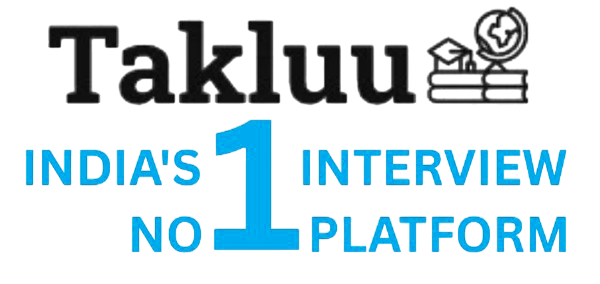
The core code of any application is written in a programming
language that is create or at least modified by end
user.(eg.java)
a scripting language is a type of prog. language that allows
control of of s/w application and sometimes used to add the
features and client side checking in a web page.(eg javascript)
both are distinct.eg. suppose in html page, u create some
textboxes, then if u want to apply some validation(email
vali.) on their text at client side or want to add features
like counter, flash images etc in the web page, then
javascript canbe used. but at the server side what to do
with this text or how to handle database, all this is
programmed in core language like java,geerally called prog.
language. but java and javascript are totally different.
Script Language is code fragment.it is interpreted.It is dynamically typed.
but the programming language is a compiled language and it is a stand alone application.
Mobile app development is the process of creating software applications specifically designed to run on mobile devices like smartphones and tablets. It is important because it allows businesses to reach customers directly, enhances user engagement, provides convenience, and enables access to services and information on-the-go.
To publish an app on the Google Play Store, you need to:
1. Create a Google Play Developer account.
2. Prepare your app (APK or AAB file) and ensure it meets the Play Store guidelines.
3. Fill out the app listing details (title, description, screenshots, etc.).
4. Upload the app file and set the pricing and distribution options.
5. Submit the app for review.
To publish an app on the Apple App Store, you need to:
1. Enroll in the Apple Developer Program.
2. Prepare your app (IPA file) and ensure it meets the App Store guidelines.
3. Use Xcode to archive your app and upload it to App Store Connect.
4. Fill out the app listing details (title, description, screenshots, etc.) in App Store Connect.
5. Submit the app for review.
Some common challenges in mobile app development include:
1. Device Fragmentation: Different screen sizes, resolutions, and operating systems.
2. Performance Optimization: Ensuring the app runs smoothly on various devices.
3. Security: Protecting user data and preventing breaches.
4. User Experience: Designing intuitive interfaces that meet user expectations.
5. Connectivity Issues: Handling offline functionality and varying network conditions.
6. App Store Guidelines: Complying with different app store requirements and policies.
7. Testing: Ensuring the app works correctly across multiple devices and platforms.
App performance optimization is important because it enhances user experience by making the app faster and more responsive, reduces battery consumption, improves resource usage, increases user retention, and can lead to better app store rankings.
An SDK (Software Development Kit) provides developers with the tools, libraries, documentation, and APIs needed to create mobile applications for a specific platform, simplifying the development process and enabling access to platform-specific features.
To price a new credit card product, consider the following factors:
1. **Cost Analysis**: Calculate the costs associated with issuing and managing the card, including operational costs, marketing, and customer service.
2. **Market Research**: Analyze competitors' pricing strategies and features to understand market standards and customer expectations.
3. **Target Audience**: Identify the target demographic and their willingness to pay for specific features or benefits.
4. **Risk Assessment**: Evaluate the credit risk associated with potential customers and adjust pricing to mitigate losses from defaults.
5. **Value Proposition**: Determine the unique features of the card (e.g., rewards, cashback, travel benefits) and price it based on the perceived value to customers.
6. **Regulatory Compliance**: Ensure pricing adheres to legal and regulatory requirements in the banking industry.
7. **Feedback Loop**: After launch, gather customer feedback and monitor usage patterns to adjust pricing as necessary.
Set an introductory rate or promotional offers to attract
1. **Data Analysis**: Collect and analyze financial data from all branches, focusing on the four metro cities. Look at revenue, expenses, and customer demographics.
2. **Performance Metrics**: Identify key performance indicators (KPIs) such as customer acquisition cost, average transaction value, and branch profitability.
3. **Market Research**: Conduct market research to understand the competitive landscape, customer preferences, and economic conditions in the metro cities.
4. **Branch Operations Review**: Evaluate the operational efficiency of the branches in the metro cities, including staffing, service quality, and product offerings.
5. **Customer Feedback**: Gather feedback from customers in those areas to identify pain points and areas for improvement.
6. **Identify Trends**: Look for trends in customer behavior, such as changes in banking habits or preferences for digital services.
7. **Benchmarking**: Compare the performance of the underperforming branches with successful branches in other regions to identify best practices.
8. **Strategic
The client's market share may be declining due to factors such as increased competition, changing consumer preferences, lack of innovation, poor marketing strategies, or pricing issues. To address this, the client can conduct market research to understand customer needs, improve product quality and design, enhance marketing efforts, explore new distribution channels, and consider competitive pricing strategies.
They should consider market demand for fax machines, competition, production costs, potential pricing, target audience, and technological trends. If there is a significant demand and they can produce it at a competitive price, they should launch it; otherwise, they should hold off.
Yes, a drug company should consider building a remote call center to improve customer support, enhance accessibility, and reduce operational costs.
